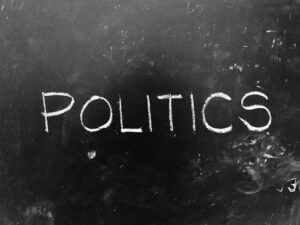In the United States, the interest groups most strongly associated with neo-Marxist ideas would have been forced to operate more efficiently long ago, had they not assumed the mantle of social justice warriors. What American leftists like to describe as their commitment to greater fairness and equality almost always turns out to be a superficial rebranding of permanent dysfunction.
Consider, for example, how teacher unions have for decades used left-wing ideology to protect an education system that continues to rank poorly in comparison with other advanced countries. Despite adopting never-ending leftist palliatives over the decades such as bilingual instruction and Common Core, results from the 2019 biannual National Assessment of Educational Progress (NAEP) test of fourth and eighth graders show low-performing U.S. students have made absolutely no gains over the last 30 years. COVID shutdowns are likely to worsen the situation.
The real solution to the academic failure of American public schools is no mystery to anyone who has looked at the data. It’s well-documented that school districts perform better when parents have a subsidized option to place their kids in private schools, home school, or use tutors.
But leftist teachers and administrators continue to push ideological policies instead, such as eliminating selective-admission public schools and recognizing multiple valedictorians at graduation time. Such feel-good social policies help save them from having to produce better academic results.
The same leftist thinking has also justified the $1.67 trillion college student debt problem. This debt problem is unnecessary, because there are many ways to substantially reduce the cost of a bachelor’s degree: giving more credit for online courses taken off-campus, reducing from four to three the years the time needed to graduate, more students taking freshman and sophomore years at less expensive community colleges, outsourcing health centers and other campus services, ending the athletic arms race (fewer than 20 collegiate sports programs make money), and collaborative purchasing.
Unfortunately, what today’s leftist universities consider far more important than making education affordable is expanding the ranks of their administrators, especially those with politically correct specialties. In the 1980-1981 academic year, according to Forbes, administrative spending comprised just 26 percent of American college budgets, while instructional spending comprised 41 percent. Three decades later, the two categories were virtually even.
It is not an exaggeration to say that wherever we see an American institution that appears to be failing its basic mission, we can expect to find staffers who have traded the hard work of organizational innovation for the relative ease of leftist posturing. They have, as Center of the American Experiment analyst Katherine Kersten puts it, stopped being “the experts” and instead become “the elect.”
Darel E. Paul, an unusually brave professor of political science at Williams College, agrees. He believes identity politics has become the most popular expression of leftism precisely because it so effectively masks the failures of mediocre leaders. It gives managers and professionals who have either become lazy or outlived their usefulness a “much-needed social purpose,” he says. It assigns them the appearance of “noble tasks” while justifying their continued employment “to accomplish those tasks.”
We see this most clearly in large, liberal Democrat-run cities, where a half-century of being unable to win President Lyndon Johnson’s $22 trillion War on Poverty has left local politicians, community activists, and unionized social workers with only one way to rationalize their ongoing power: put a racial justice gloss on the status quo.
Instead of finding ways to make local streets safer, for example, San Francisco Mayor London Breed simply tells law-abiding citizens to accept petty crime as a legitimate, even admirable response to the white power structure. New York City Mayor Bill de Blasio makes a similar case for releasing lawbreakers without bail, tolerating turnstile-jumping on the subways, and allowing public urination.
Perhaps nowhere has leftism done more to protect a dysfunctional status quo than in the mainline religious denominations, which have been losing members at a stunning rate. Self-described Protestants are down from 51 percent to 43 percent of the U.S. population over the past decade, with Catholics down from 23 percent to 20 percent over the same period.
As Baylor University Distinguished Professor of History Philip Jenkins has noted, recent polling shows atheists and agnostics still make up no more than the same 9 percent of the population they always have. The real problem is that too many clergy have fallen into a trap scripture warns against—equating God’s service with some political scheme to perfect an earthly utopia.
The public school teachers whose students cannot pass the simplest tests, the university administrators who let their students take on unconscionable debt, the urban leaders presiding over the collapse of their own cities, the greens who force hardworking taxpayers to subsidize renewable boondoggles, and the clergy who substitute social justice for spiritual leadership: all have discovered left-wing pieties can save them from having to face up to what their institutions really need.
The good news, as the late economist Herb Stein famously observed, is that “if something cannot go on forever, it will stop”—meaning that no ideology can prop up a dysfunctional system forever. But he failed to add that if floundering institutions can come to an agreement on the same ideology, validating each other in the public square, then the decline can be stretched out over quite a long time, needlessly squandering society’s human and material resources in the process.
To the extent that leftism has any real power, it is not to compel every social organization to join a successful crusade for greater fairness and equality, but to delay the time mediocre elites are finally exposed for the harm they have done to real progress. If there is one thing each one of us can do to hasten this day of reckoning, it is to treat leftism for what it really is: the callously deceptive face of self-serving stagnation.





